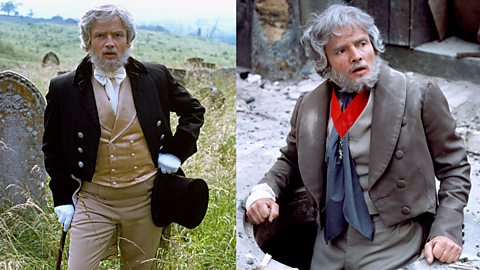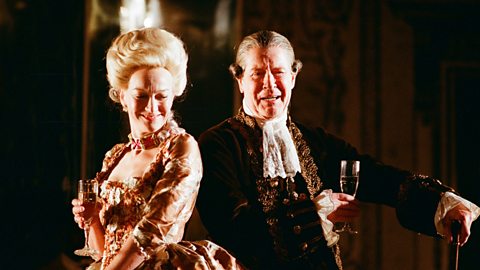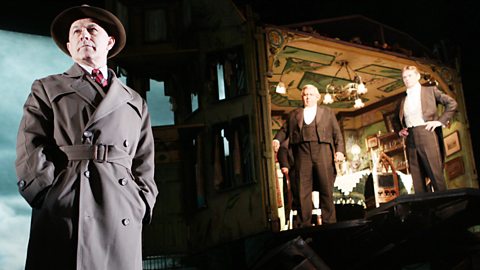The purpose of costume design
costumeWhat a performer wears on stage. is an important aspect of a production, as it helps to:
- establish a character
- convey the contextThe factors surrounding a text that help us to understand it; the background events that help to explain something. of the play
- support the styleHow theatrical ideas are presented on stage. of the production
Establishing a character
As well as helping the audience to understand information about the character and the performance as a whole, performers can find it easier to âbecomeâ their character once they try their costume on. Costumes can:
- provide the audience with basic information about a character, such as their age, gender, occupation and economic and social background
- reveal lots of information about a characterâs personality, eg a vain character might wear a flamboyant outfit to draw attention to themselves, while a shy character might wear plain clothes in dull colours
- reveal information about a characterâs circumstances within the play, helping to tell their story, eg a character might begin the play wearing smart clothes but by the end of the play their costume might look creased and untidy to help communicate their journey and what they have experienced

Conveying the context of the play
Costumes can also convey the context of the play, including the time period and geographical setting, following fashions and styles that evolve from one decade to the next. Performers wearing dinner jackets, bow ties and top hats could suggest the historical setting of the piece before any dialogue is spoken. Through local cultural dress or references to the climate, costume design can also help to convey the geographical setting of a play.

Image caption, Costume can represent a specific time period, following fashion trends of that era, as in School For Scandal, The Barbican Theatre
Image caption, Costume can also convey the geographical setting, as in this Kabuki performance
1 of 2
Supporting the style
Costumes support the overall style of a production, along with the other design elements. If a production is naturalisticA form of theatre designed to create the illusion of reality for an audience. Originated in the late 19th century. in style, then costumes should be realistic and recreate everyday life. However, a pantomime Form of popular entertainment; generally humorous and fantastical storylines are underpinned by recognisable themes such as poverty, unemployment and neglect., which is far more theatrical, would feature grand and colourful costumes to support the overall style of the show.

Image caption, Three men stand on stage, wearing suits in the naturalistic style of the 1940s during a performance of An Inspector Calls, The Novella Theatre
Image caption, Theatrical pantomime costume in Jack and The Beanstalk, Nottingham Playhouse
1 of 2